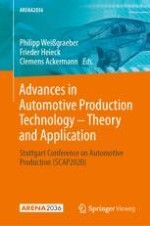This volume of the series ARENA2036 compiles the outcomes of the first Stuttgart Conference on Automotive Production (SCAP2020).
It contains peer-reviewed contributions from a theoretical as well as practical vantage point and is topically structured according to the following four sections: It discusses (I) Novel Approaches for Efficient Production and Assembly Planning, (II) Smart Production Systems and Data Services, (III) Advances in Manufacturing Processes and Materials, and (IV) New Concepts for Autonomous, Collaborative Intralogistics.
Given the restrictive circumstances of 2020, the conference was held as a fully digital event divided into two parts. It opened with a pre-week, allowing everyone to peruse the scientific contributions at their own pace, followed by a two-day live event that enabled experts from the sciences and the industry to engage in various discussions. The conference has proven itself as an insightful forum that allowed for an expertly exchange regarding the pivotal Advances in Automotive Production and Technology.
